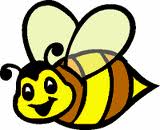Why keep bees?

There are lots of reasons to start keeping bees. At a minimum having a beehive will help support bee numbers and provide the local area with superb pollinators. Even better, the bees will provide valuable products including honey, which tastes great and has health benefits, and wax which can be used to make things.
How does a hive work?
Basically, the hive is a way of giving bees a home and also allowing you to harvest honey. It consists of a series of boxes (containing frames) which sit on top of each other. The bottom box is called the ‘brood chamber’ which is where the queen bee lives and lays all the eggs. The brood chamber is purely for the bees themselves (you never harvest honey from this).
What do I need to do to start beekeeping?
- Get some books from your local libary
- Contact your local beekeeping association to find out more about beekeeping
- Attend a a beginners beekeeping course so you can learn the nuts and bolts and get your hands on a beehive for the first time. These are usually held at intervals by the beekeeping association. They will also get you in touch with experienced beekeepers who will be an invaluable source of help as you get started.
- Buy a reference book in case you get stuck
- Purchase the hive. Hives can be very expensive and the best hives are made from Red Cedarwood. It’s worth the investment though as the cheaper hives are more likely to get damaged and apparently a good quality hive should last you a life time. Buying a hive for the first time is a bit tricky. It’s much easier if you understand how a hive works (see About beekeeping).
- Build the hive
- Order the bees
- Introduce the bees to your hive and leave for 3 days
- Inspect the hive for the first time
- Regularly inspect the hive every 7-10 days
Where can I keep bees?
Anywhere! As long as you are not causing inconvenience to other human beings, there is really no restriction. Even in the middle of great cities like London there are city beekeepers with hives on roof tops.
What equipment do I need?
- stand with legs
- floor (get a varroa floor with galvanised metal tray and mesh)
- brood chamber and frames with foundation to put inside (get Hoffman’s frames)
- queen excluder
- super and frames with foundationto put inside (get 10 slot metal castellations)
- crown board
- eke
- roof
- frame feeder
- Ashforth feeder (used for more rapid feeding)
- smoker (to calm the bees down)
- beesuit (to protect you)
- hive tool (to help you move things as it can get a bit sticky)
- varroa treatment
- sugar feed – around 12kg per hive
- jars (to put your honey in next year) – you should prepare for around 100lb (45kg) honey from the hive.
- labels (for your jars)
- another hive
- nucleus hive
- 2 supers for the original hive
- 2 supers for the new hive
- frames and foundation
- settling tank and honey strainer
- honey buckets
Although buying new equipment is expensive, beginners should not buy second hand equipment for several reasons:
- poor condition
- incorrect dimensions
- will need sterilisation to prevent disease
What type of hive should I buy?
There are a number of different hive designs. The best one to buy really depends on where you live and your local beekeeping group. In some countries, like England there is a standard hive (the National Hive) so it would make sense to start with this type of hive. The benefit of this is that you can use standardised equipment which can be purchased from multiple providers. In addition, if you have the same type of hive as other local beekeepers then they will be able to help you get started more easily. For example, they may be able to provide a the first sets of frames for your brand new hive to get you started.
hive. The benefit of this is that you can use standardised equipment which can be purchased from multiple providers. In addition, if you have the same type of hive as other local beekeepers then they will be able to help you get started more easily. For example, they may be able to provide a the first sets of frames for your brand new hive to get you started.
What’s the best location for my hive?
- Space – you need about 2 metres all around the hive – particularly the back so that you can inspect the hive.
- Protection from the elements – ideally some sort of a windbreak such as a hedge or fence nearby will protect the hive from winds.
- Other people – ideally keep the hive entrance pointing away from any footpaths to prevent people colliding with the bees flight path.
- Altitude – ideally keep on higher ground to reduce the risk of frost or flooding affecting the beehive.
